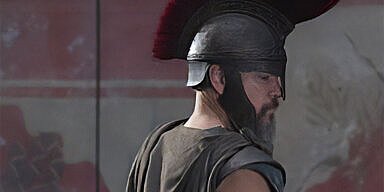If you’ve ever walked the streets of Naples and thought something about the place felt familiar, you’re not imagining it. There’s something Greek in the bones of that city. Something that goes deeper than the architecture or the sea air.
And just to be clear, we’re not talking about Naples, Florida. We mean the original Naples. The one on Italy’s southern coast, where ancient Greek sailors once came ashore and never really left.
This June, the people of Naples lit up their streets to remind the world just how far back those roots go. They weren’t just marking a historical anniversary. They were celebrating a memory that never really faded.
Two and a half thousand years ago, Greek settlers from Cumae landed on the rocky island of Megaride and built a port called Parthenope, named after the siren whose body, legend says, washed up on its shores. Cumae itself was the first Greek colony on the Italian mainland, founded in the 8th century BCE by settlers from the island of Euboea. Later, the small port at Megaride was refounded as Neapolis (Νεάπολις), the “New City.” Today, we call it Naples.
This summer, that history came alive again. More than two hundred people dressed in Greek tunics and carried torches through the city, retracing an ancient torch race called the Lampadedromia. The route ran along the bay, from Castel dell’Ovo through Santa Lucia and via Partenope to Colonna Spezzata. It wasn’t some dusty reenactment. It felt real. Alive. Like the ancestors hadn’t really left, just stepped aside for a moment.
The race was part of a larger series of events marking the city’s 2,500th anniversary. There were workshops, performances, even delegations from other Greek-founded cities in southern Italy, places like Taranto and Agrigento, joining in. Together, they raised the flag of Magna Graecia, the name ancient Greeks gave to the stretch of Italy they made their own.
For those of us in the Greek-American community, stories like these remind us how far our heritage travels. The Greek world was never confined to one region. It moved, adapted, and left traces. Naples carries that legacy, and in a way, so do neighborhoods here in Philadelphia.
But Naples today is more than myth and memory. It’s a city of striking contrasts, where beauty and hardship often share the same space. Life here can be unpredictable, and the stories coming out of Naples reflect that mix. Some, like the series Gomorrah, focus on the city’s harder edges. But that’s only part of the picture. There’s also music, resilience, and a deep, unmistakable pride. Naples doesn’t just get by. It sings.
That might be why the revival of something like the Lampadedromia feels so powerful. It’s not a performance for outsiders. It’s something locals do for themselves. A way of saying that even in a city full of challenges, old stories still matter.
One moment in particular stood out. The celebrations began back in February, with Naples hosting International Greek Language Day. That’s no coincidence. The city has quietly become a hub for that day’s events, thanks to the local Greek community and people like Professor Jannis Korinthios, who has spent years making sure the connection between Naples and Greece stays alive.
Even the Roman poet Virgil, who lived in Naples, once called himself nurtured by sweet Parthenope. There’s something about this city that holds on to stories like that and doesn’t let go.
Looking ahead, Naples will be Europe’s Capital of Sport in 2026. The first match of the European Men’s Volleyball Championship will be played in Piazza del Plebiscito. You can almost picture it now. A modern arena in an ancient square. Cheers echoing where torchlight once burned.
In the end, what happened in Naples this year wasn’t just a celebration. It was a quiet reminder that some things don’t disappear. They just keep burning. Torch after torch. Person after person. Across generations.
And if you’ve ever felt like your own story stretches across oceans and centuries, maybe that’s because it does.


